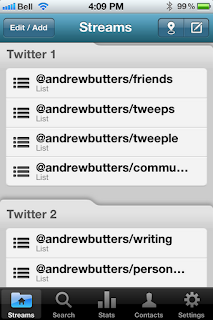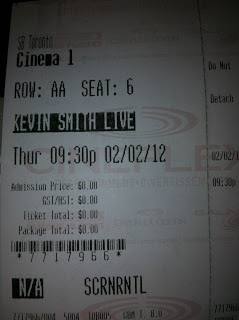Some people don’t “get” Twitter, which is understandable if you’ve only ever scratched the surface. I have been on Twitter since sometime in 2009, and it wasn’t until recently that I started becoming more active, and it wasn’t until very recently that I started to see its real value. I can honestly say I this point that Twitter is improving the quality of my life, and I can point to two key moments that opened my eyes to this.
I’m not being overly dramatic just to appease my readership (all 7 of you!) either. Read this short article on ways Twitter can change your life. It may over state some of the claims but the key message behind each one is true. What it fails to outline however is that if you are planning on using Twitter for more than just random updates about friends’ lunches or celebrity gossip then you’ve got to use Twitter just like you would any other tool.
The wonderful Julia Rosien of Social North put together this quick read. It begins, “Whether it’s a hammer or Twitter, a tool is only as good as the person wielding it.” I’ll take this a step further and suggest that any tool, used for its intended purpose, has the potential to be a very valuable tool. Sure, a pocket knife can open a can of beans, but it’s a much less useful pocket knife if the blade is all dull and bent and you’re sporting a 2 inch gash because the bean juice got on your hand and the knife slipped and now the helpful nurse in the ER is asking you, “Why not just use a can opener?“. Why not indeed.
More to the point (and hopefully getting us closer to those two eye opening Twitter moments) Twitter users are now using the tool in remarkable ways, 140 characters at a time, FOR FREE. That’s right. Free. Twitter does not charge you to advertise, promote, share, recommend, endorse, or spam, though that last one will get you kicked off (and rightfully so). I don’t know too many other services out there that have the potential to capture such a globally diverse audience, in real time, with no charge.
Celebrities such as Kevin Smith have actually started using Twitter to promote their brand and business. Hell, Kev’s gone a step further and is practically pinning the hopes of his latest movie on word of mouth advertising, and Twitter was his jumping off point. With over 1.8 million followers on Twitter and a flick that’s looking like it will be in the black before it’s even released it’s hard to argue against the value of the tweet.
It is really just a question of knowing what problem you’re trying to solve:
- How can I reach a larger, more diverse audience?
- How can I get immediate feedback on an idea?
- How can I become more involved with my community?
- How do I get more than 7 people reading my blog?
My coming out party on Twitter started when I saw this tweet. It was from a friend of mine that I haven’t been seeing enough of. He works hard and has a family, I’m lazy and have a family. Life just gets in the way sometimes, but after reading about his awesome news I ran straight out and joined the celebration, and you know what? I met some truly amazing people. Friends of friends, and interesting and remarkable people right in my own backyard: Mike, Ben, Melanie, just to name a few.
That led to me hearing about a scotch tasting at the KW Art Gallery where I got to meet Robb, Mark, and Dave, which was followed up by an invite (sent out via Twitter) to Start Up Drinks Waterloo where I had some great conversations with Matt “Dennick” about Twitter as well as good talks with Craig and Tera (who shares my crazy obsession with getting a Twitter @ mention. It’s like crack, I tells ya). Soon I’ll be off to the Social Media Breakfast and then Ignite Waterloo.
To think this all started with one Tweet.
The other defining moment for me came when I spent a couple weeks putting together a song using some online music creating software. I wrote a 54 second instrumental in the hopes that Kevin Smith would “buy” it and use it for one of his podcast introductions. I tweeted him this, and all he did was tweet this a few minutes later, and within a half hour of me posting the blog entry I 500 hits and the song had over 200 plays. Next thing I knew I was exchanging emails with Jordan Monsanto. Awesomely surreal. The whole experience showed me that Twitter in the hands of the right people can be a powerful tool indeed.
So whatever problem you’re trying to solve, or whatever it is you’re looking for, all I can say is that Twitter can help. Identify the problem you want to solve, read up on how other people are using Twitter to solve similar problems, and get on there and start getting engaged. Well, not necessarily THIS type of engaged. I can think of much better ways to propose, though I do highly recommend sharing the good news on Twitter afterwards.



